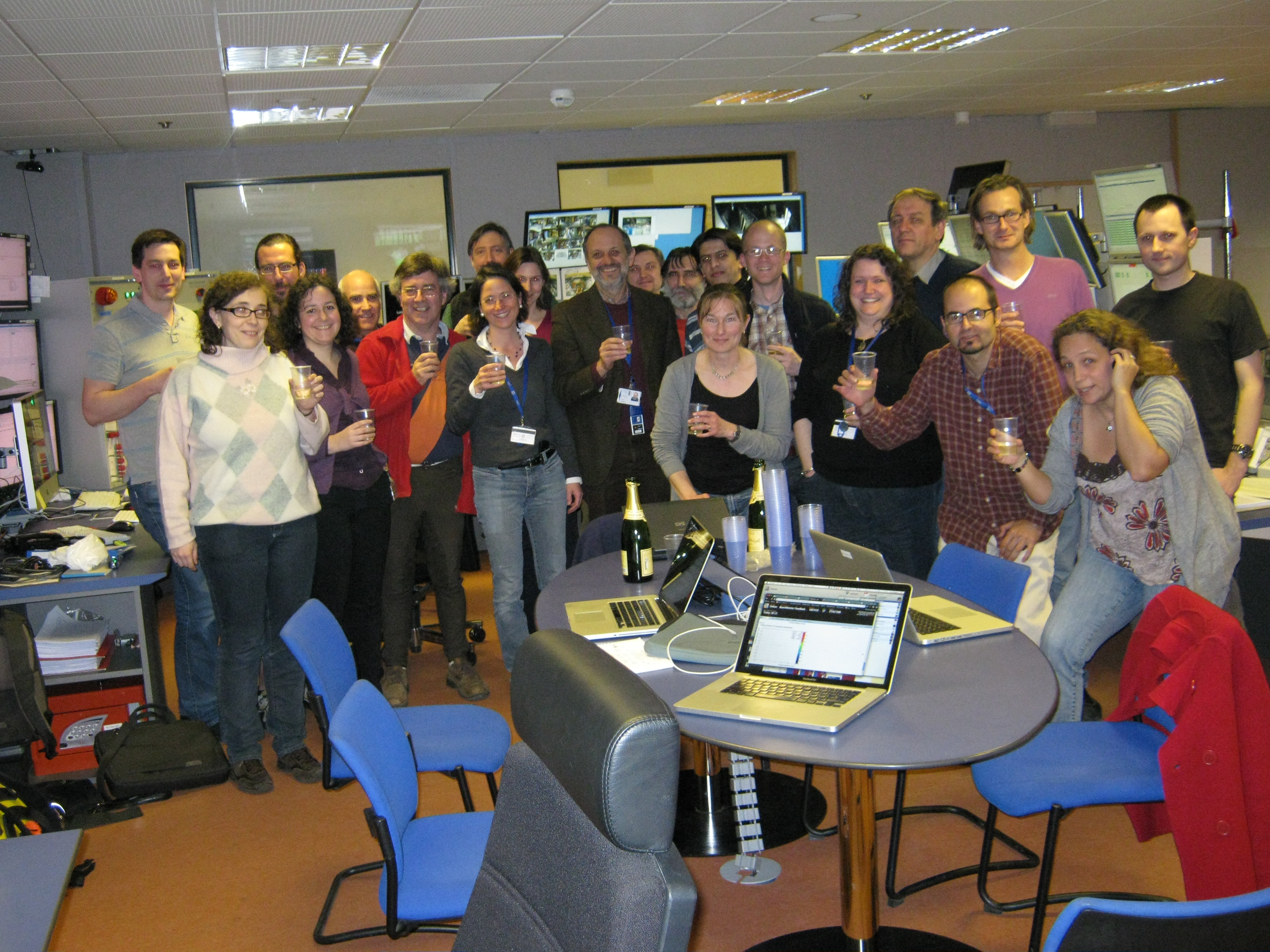
At 13:25 on Sunday, 13th March, Deputy Run Coordinator, Luca Malgeri told CMS Times: “The current beam is going to be dumped soon, and the next fill is for collisions.”
The LHC had its first stable beams of 2011 a little after 18:00 and CMS experienced collisions soon after at an energy of 7 TeV and a luminosity of 1.2 x 1030 cm-2s-1
Although CMS actually had its first collisions of 2011 on Friday the 11th, the silicon pixel and tracker systems were not fully powered as the LHC had not announced "Stable Beams". Luca and his fellow Deputy Run Coordinator Maria Chamizo Llatas were at the CMS Control Room at Point 5. “Today [Sunday] we have switched on the silicon tracker and the pixels, which are the most sensitive detectors. We needed the LHC to declare these stable beams, so we could switch on the detectors closest to the interaction point. These detectors are necessary in order to reconstruct the full events, including the tracks,” explained Maria.
Luca noted: “It is not as exciting as the first beam and the first collisions [from 2009], but still there were many checks to be done. So, there are 20-30 people in the control room, here, checking every detail.”
He added: “A few things were just changed at the last minute in order to adapt to the situation of the beam. There were a few hiccups as usual at the beginning, but there was no delay in getting the collisions.”
Maria explained what had to be done after the collisions started to take place: “This is the first time that we are doing this after the winter shutdown of the LHC. So, we have to check that everything is working properly, that we are getting the data, that we can see the events and that these data are useful for analysis afterwards. This is a very important step in order to be sure that we can provide useful data during the year.”
CMS proceeded quickly to normal operations and the collisions were used to ensure that the timing of the detectors and the efficiency of the data are good. “As soon as the first data came in, we had immediate reconstruction and data-quality checks with histograms and other tools. At the moment, the report we have is that they are all good. For example, the signal-over-noise, one of the characteristic plots of the tracker, is even better than what we got last year,” said Luca.
The successful start of collisions means that after a brief pit stop over the winter, the fastest racetrack in the world is prepared for sustained data-taking over the rest of what promises to be a very fruitful year.
figure caption: Jubilant scenes from the CMS Control Room
- Log in to post comments

